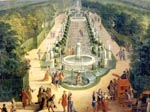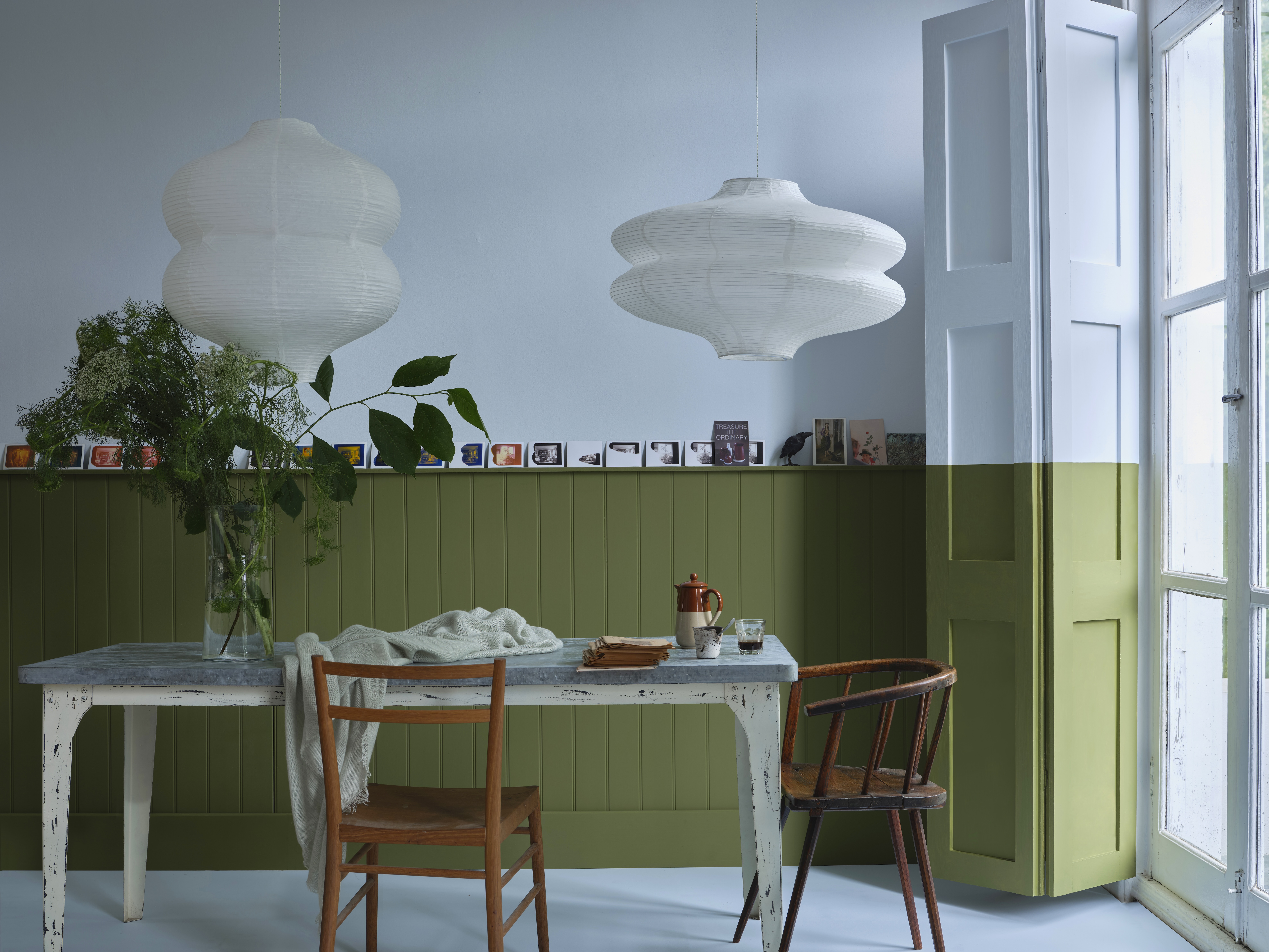Great British Garden Makers: George London and Henry Wise
George London and Henry Wise must vie with Gertrude Jekyll and Edwin Lutyens for Britain’s greatest gardening double act


George London and Henry Wise must vie with Gertrude Jekyll and Edwin Lutyens for the title of Britain's greatest gardening double act. As sole partners at the celebrated Brompton Park Nursery from 1689 until London's death in 1714, they enjoyed a near monopoly on large-scale landscape design, also supplying thousands of trees to landowners for avenue planting.
London and Wise specialised in an English version of the formal Baroque gardens associated with the Catholic courts of continental Europe, of which Versailles was the pre-eminent example. These were gardens in which magnificent flat parterres spread out below one or two façades of the palace or house, defined by box hedges in patterns derived from textile designs and enlivened with coloured gravels, white or painted statuary, extravagant fountains and colourful annual flowers.
None of London and Wise's designs survive on the ground-many were smoothed over by Capability Brown-although the restored Privy Garden at Hampton Court Palace (probably designed by Daniel Marot) provides a good idea of the style. Wise is described as the business brain of the outfit, and it does appear he oversaw nursery operations-although, as a designer, he was responsible for the great formal garden made at Blenheim for the Duke of Marlborough. London was the star, however.
He worked all over England (as Brown was to do) creating formal gardens at great houses such as Longleat, Chatsworth and Burghley, and his role as an early exponent of the naturalistic style has only recently begun to be appreciated.
Keeping up with the van der Joneses
In the 1680s and 1690s, scores of British landowners sought to remodel their estates in the Anglo-Dutch fashion, with brand-new parterres, kitchen gardens, ornate waterworks and radiating avenues of limes, chestnuts and elms. London and Wise were technically adept in all these areas and only too happy to oblige with a comprehensive landscape and nursery-supply service. It made them extremely rich (Wise died in possession of a fortune of some £200,000).
London's informal partnership with the architect William Talman helped secure work at Longleat and Burghley, and he also undertook commissions at Chatsworth, Bretby (where the waterworks were the major element), Cassiobury, Grimsthorpe, Canons and, finally, Wanstead, his last and perhaps greatest project.
Sign up for the Country Life Newsletter
Exquisite houses, the beauty of Nature, and how to get the most from your life, straight to your inbox.
London and Wise merged the grand manner with the supreme delicacy of floral design in parterres, partly derived from dress fashions, as evinced by this passage in their ‘translated' work, from the French, entitled The Retir'd Gard'ner (1706): ‘Imbroidery is those Draughts which represent in Effect those we have on our Cloaths, and that look like Foliage, and these Sorts of Figures in Gard'ners language are call'd Branch-work. of Imbroidery, which we call Flourishings.'
Lives entwined
1670s George London is first recorded as apprenticed to John Rose, gardener to the Earl of Essex and Charles II (it is Rose who was depicted presenting ‘the first pineapple raised in England' to the king in a celebrated painting). At this time, London was despatched to France to learn about the compartmented formal gardens that would so influence his style. By 1675, he was in the employ of Henry Compton, Bishop of London, who was an enthusiastic plantsman at his Fulham Palace gardens and also an important political figure, as a supporter of the Glorious Revolution of 1688 that saw William and Mary enthroned.
1680s In 1681, London was a founding partner at the Brompton Park Nursery (some 100 acres on the site of today's Kensington museums), but his career really took off after William and Mary's arrival, when he was appointed deputy super-intendent of the royal gardens, below William Bentinck, Duke of Portland, a key horticultural figure in his own right as well as William of Orange's key political advisor.
1689 Henry Wise's obscure early career was perhaps not as glittering as London's, but, by 1689, when he and London were sole partners at Brompton Park (the others having died or retired), he was also appointed a royal gardener, with responsibility for Hampton Court and Kensington. On the accession of Queen Anne in 1702, Wise took over from Bentinck as superintendent of royal gardens, and London busied himself with design projects all over the country, reputedly covering up to 60 miles a day on horseback.
About 1700 George London kept up with the times, as any leading professional must. London's visit, in company with Bentinck, to gardens in France in about 1700, introduced him to the serpentine walks in the bosquets at Marly (an adjunct of Versailles), which may have planted the seed of an idea.
1706 There is a sentence in The Retir'd Gard'ner (London and Wise's 1706 translation of the contemporary Le jardinier solitaire, by François Gentil) that provides a clue: ‘The most valuable Labyrinths are always those that wind most, as that of Versailles, the Contrivance of which has been wonderfully lik'd by all that have seen it.'
A few years later, London was working at Castle Howard for the 3rd Earl of Carlisle, where the naturalistic Wray Wood came to be seen to be in the vanguard of this new naturalism. The Retir'd Gard'ner advocates walks of pallisades of hornbeams ‘winding variously for the greater Ornament of Park, Labyrinths and Groves', and particularly recommends the latter. ‘Those [groves] that are irregular... are not less esteeem'd; for the Variety of them, in great Parks, is what pleases most.'
London's work and writing prove that it was variety, not naturalism, that was the keynote of the incipient landscape-garden style, and that the Baroque style was not simply ‘swept away', but rather tweaked at the edges in the early stages of its development.
After 1714 Later writers saw fit to deride London and Wise as old-fashioned, but, when he died in 1714, London wasn't seen as some relic of the Baroque design past-he was very much at the top of his profession and fully aware of the latest stylistic developments.
Country Life is unlike any other magazine: the only glossy weekly on the newsstand and the only magazine that has been guest-edited by HRH The King not once, but twice. It is a celebration of modern rural life and all its diverse joys and pleasures — that was first published in Queen Victoria's Diamond Jubilee year. Our eclectic mixture of witty and informative content — from the most up-to-date property news and commentary and a coveted glimpse inside some of the UK's best houses and gardens, to gardening, the arts and interior design, written by experts in their field — still cannot be found in print or online, anywhere else.
-
 Some of the finest landscapes in the North of England with a 12-bedroom home attached
Some of the finest landscapes in the North of England with a 12-bedroom home attachedUpper House in Derbyshire shows why the Kinder landscape was worth fighting for.
By James Fisher
-
 John Sutcliffe — The man, the myth and the paint-naming legend behind Dead Salmon and Elephant's Breath
John Sutcliffe — The man, the myth and the paint-naming legend behind Dead Salmon and Elephant's BreathBy Carla Passino